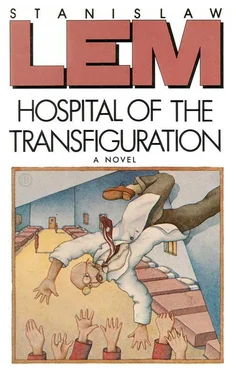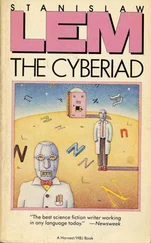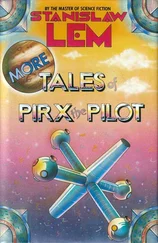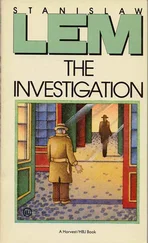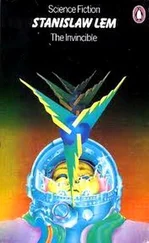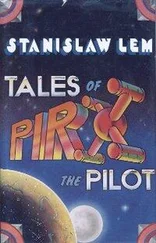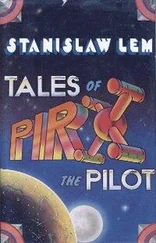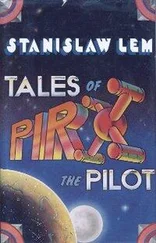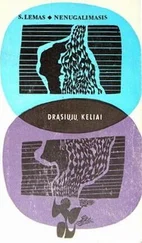Stanislaw Lem
Hospital of the Transfiguration
Translated from the Polish by William Brand
The train stopped briefly in Nieczawy. Stefan had barely pushed through the crowd to the doors and jumped off when the locomotive wheezed and the wheels began to drum behind him. For an hour he had been worrying that he would miss his stop; that problem had overshadowed all others, even the goal of the journey itself. Now, breathing the sharp outdoor air after the stuffiness of the train, he walked uncertainly, squinting in the sun, at once liberated and helpless, as if he had been jolted out of a deep sleep.
It was one of the last days of February and the sky was streaked with light clouds pale at their edges. The snow had been partly melted by the thaw and sat heavily in the hollows and gorges, exposing clumps of brush and bushes, blackening the road with mud and baring the clay hillsides. Chaos, harbinger of change, had appeared in a landscape once uniformly white.
This thought cost Stefan a careless step and water seeped into his shoe. He shuddered with disgust. The snorting of the locomotive was fading behind the Bierzyniec hills; Stefan could hear what sounded like an elusive chirping of crickets that seemed to come from all over: the unvarying sound of melting. In his woolly raglan, soft felt hat, and low city shoes, he knew that he cut an incongruous figure against the background of rolling hills. Dazzling streams danced and flashed along the road up to the village. Hopping from stone to stone, he finally made it to the crossroads and glanced at his watch. It was almost one. No specific time had been set for the funeral, but he felt he ought to hurry. The body had left Kielce in its coffin yesterday. So it should already be at the church, since the telegram had contained that vague mention of a Mass. Or was it exequies? He couldn’t remember, and it annoyed him to be pondering a liturgical question. It was a ten-minute walk to his uncle’s house, and just as far to the cemetery, but what if the procession went the long way to stop at the church? Stefan moved toward the bend in the road, stopped, took a few steps back, and stopped again. He saw an old peasant coming along a path between the fields, shouldering the kind of cross usually carried at the head of a funeral procession. Stefan wanted to call out to him, but didn’t dare. Clenching his teeth, he strode toward the cemetery. The peasant reached the cemetery wall and disappeared. Stefan could not tell whether he had gone on toward the village; in desperation he gathered up the folds of his coat like an old woman and charged through the puddles. The road to the cemetery skirted a small hill overgrown with hazel. Ignoring the way his feet sank into the snow and the twigs lashed his face, Stefan ran to the top. The thicket ended abruptly. He came back down onto the road just in front of the cemetery. It was quiet and empty, with no trace of the peasant. Stefan’s haste evaporated at once. He looked mournfully at his muddy trouser cuffs and, gasping for breath, peered over the gate. There was no one in the cemetery. When he pushed it open, the gate’s dreadful shriek subsided into a sad groan. Dirty, crusted snow covered the graves in billows that left mounds at the foot of the crosses, whose wooden ranks ended at a wild lilac bush. Beyond stood the stone monument of the Princes of Nieczawy and the larger, separate crypt of the Trzyniecki family, black with names and dates in gold letters, three birches standing at the granite headstone. In an empty strip that separated the mausoleum from the rest of the cemetery like a no-man’s-land gaped a freshly dug grave whose clay blotted the surrounding white. Stefan stopped dead, shocked. Apparently the mausoleum was full, and with no time or way to enlarge it, a Trzyniecki would have to go into the ground like anyone else. Stefan imagined how Uncle Anzelm must have felt about this, but there was no real choice: since Nieczawy had once belonged to the Trzynieckis, all the dead were buried here, and although only Uncle Ksawery’s house now remained, the custom endured. At each death family representatives came to the funeral from all over Poland.
Crystal icicles hung from the arms of the crosses and the wild lilac branches, and the quietly dripping water made holes in the snow. Stefan stood for a moment before the open grave. He should have gone to the house, but he found that idea so unappealing that instead he paced between the crosses of the country cemetery. The names, burned with wire into the boards, had turned into black stains. Many had disappeared entirely, leaving smooth wood. Floundering in the snow that chilled his feet, Stefan walked around the cemetery until he stopped suddenly at a grave marked by a large birch cross with a piece of metal nailed to it. The inscription was done with flourishes:
Traveller, Tell Poland Her Sons Lie Beneath
Faithful To Her Until The Hour Of Their Death.
Below was a list of names and ranks. An unknown soldier came last. There was also a September 1939 date.
Not six months had passed since that September, but the inscription would not have endured the foul weather and frost had it not been retouched by some evocative hand. A similar care showed in the fir branches that covered the grave, which was so small that it was hard to believe that several people were buried in it. Stefan lingered a moment, moved but also uncertain, for he was not sure whether he should take off his hat. Unable to decide, he moved on. The cold of the snow was getting to him; he kicked his shoes together and looked at his watch again. It was twenty past one. He had to hurry if he wanted to get to the house in time, but it occurred to him that he could simplify his ceremonial participation in this funeral by waiting for the procession at the cemetery, so he turned back and stood again at the excavation that would receive Uncle Leszek’s body.
Looking into the hole, Stefan realized how deep it was. He knew enough of the gravedigger’s mysterious technique to understand that the grave had purposely been dug deep enough to contain a future coffin—that of Aunt Aniela, Leszek’s widow. The realization made him feel like an inadvertent witness to some impropriety; he forced himself to pull away and found himself looking down rows of lopsided crosses. His mind had been sensitized by loneliness, and the thought that differences in living standards persisted even among the dead struck him as absurd and pitiful. He breathed deeply for a moment. It was absolutely quiet. Not the slightest sound came from the nearby village, and even the crows, whose cawing had accompanied him as he walked, had fallen silent. The foreshortened shadows of the crosses lay on the snow and the chill rose from his feet up through his body to his heart. He crouched, burying his hands in his pockets, and in the right one found a small bundle—bread his mother had tucked there before he left home. Suddenly hungry, he took out the bread and unwrapped the thin paper. Ham shined pink between the slices. He brought the bread to his mouth but could not bring himself to eat standing at the freshly dug grave. He told himself this was going too far—what was it, really, but a hole dug in clay?—but he could not help it. A piece of bread in his hand, he waded through the snow toward the cemetery gate. As he passed the nameless crosses he searched in vain for some individual trait, some evidence of the dead, in their ungainly forms. He thought that efforts to maintain graves expressed a belief that reached back to times immemorial. Regardless of the precepts of religion, in spite of the obvious fact of decay, and contrary to the evidence of their senses, people still acted as though the dead led some sort of existence deep in the earth—uncomfortable perhaps, maybe even dreadful, but an existence just the same, one that lasted as long as some identifying mark on the surface remained.
Читать дальше
